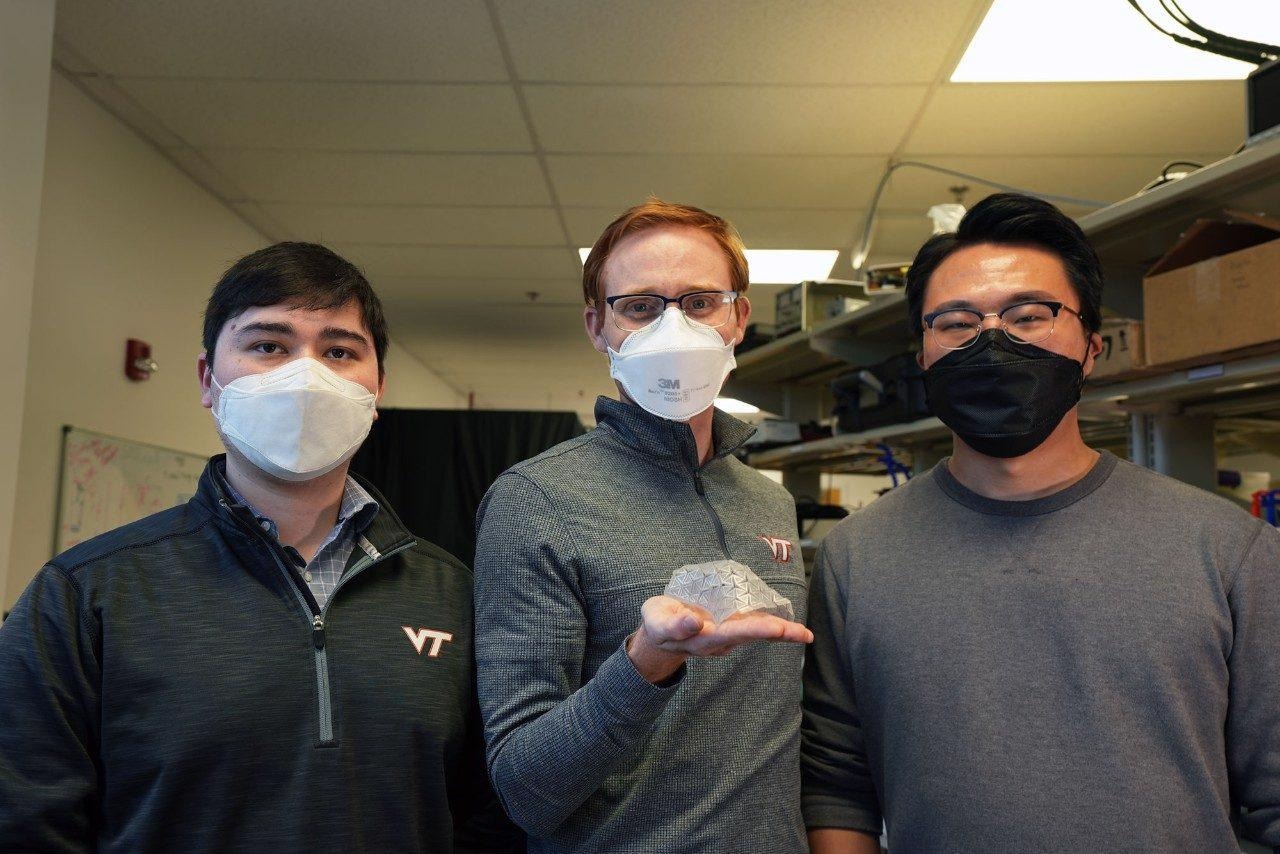Robotics scientists at Virginia Tech have developed a multifunctional shape-morphing material that enables soft robots to adopt complex, load-bearing shapes without the use of motors or pulleys. A low-melting-point alloy (LMPA) endoskeleton inspired by kirigami responds in less than one-tenth of a second.
 Image Credit: Parrish, A., (2022) New soft robot morphs from a ground to air vehicle using liquid metal. [online] Vtx.vt.edu. Available at: https://vtx.vt.edu/articles/2022/02/eng-bartlett-morphing-drone.html
Image Credit: Parrish, A., (2022) New soft robot morphs from a ground to air vehicle using liquid metal. [online] Vtx.vt.edu. Available at: https://vtx.vt.edu/articles/2022/02/eng-bartlett-morphing-drone.html
Roboticists have long been inspired by nature in their designs. Human muscles, for example, flex into various shapes in response to loads. In response to their environment, octopi alter their shapes. Multifunctional robots are opening up new possibilities for the design of economically efficient machines.
When we started the project, we wanted a material that could do three things: change shape, hold that shape, and then return to the original configuration, and to do this over many cycles.
Prof. Michael Bartlett, Macromolecules Innovation Institute, Virginia Tech
A Brief Introduction to Multifunctional Robots
Today’s robots are highly efficient at performing specific tasks, whether it be cleaning, security, inventory management or parcel delivery. While single-use case robots minimize complexity and reduce development costs, they may not be economically efficient in the long term.
To be cost-effective and meet the challenges of industry and society, robots must increasingly become multifunctional. This is even more relevant with advances in artificial intelligence, which create the possibilities of self-learning robots.
The COVID-19 pandemic, for instance, generated a significant increase in demand for disinfection robots. However, it became clear that robots that could clean and disinfect would be more beneficial.
Combining multiple functions into a single robot has several advantages:
- It saves space as one robot performs the job of several robots
- Increases versatility, such that one robot can be programmed for multiple applications
- Improves productivity as less time is taken up with swapping tools
- Increase efficiency and saves costs
Furthermore, soft robots have been inspired by nature in the quest to design more versatile machines. Multifunctional soft robots - manufactured from soft and adaptive materials - could be deployed into novel applications in industry, medicine, commerce and society.
Building a Shape Morphing Robot
The Virginia Tech researchers were led by Michael Bartlett, an assistant professor in mechanical engineering within the Macromolecules Innovation Institute. They designed a robotic endoskeleton using a low-melting-point alloy (LMPA) which they enclosed within a rubber skin.
The team was inspired by the Japanese art of kirigami, where shapes are fashioned by cutting paper. By observing kirigami patterns in composites and rubbers, they could design geometric patterns in a metal composite, allowing the metal to change its shape while retaining its strength.
This is significant because metals normally remain fixed in shape once bent or stretched. The kirigami-inspired design allowed the robotic endoskeleton to change shape and bear loads while eliminating the need for a power source to enable it to retain its shape.
To enable shape morphing, the researchers embedded thread-like micro-heaters into the LMPA mesh. Once the temperature reached 60 oC, the metal would melt. The rubber skin would contain the liquified metal, thus allowing the metal to morph. Once the metal cooled, it retained its new shape.
In fact, the researchers were able to fashion a variety of shapes, such as cylinders, balls and even the shape of the bottom of a pepper. The mesh also showed ultra-fast response times of less than a tenth of a second. Moreover, the endoskeleton could be melted and reshaped multiple times if it broke.
To demonstrate the capabilities of their material, the Virginia Tech team integrated a power and control mechanism into a drone that could morph from a ground to air vehicle. They also fashioned a small submarine that was able to retrieve an object from the bottom of an aquarium.
The Virginia Tech multifunctional shape-morphing material offers promising applications in multifunctional robotics, wearable devices and self-healing applications.
We’re excited about the opportunities this material presents for multifunctional robots. These composites are strong enough to withstand the forces from motors or propulsion systems, yet can readily shape morph, which allows machines to adapt to their environment.
Edward Barron, Graduate Student, Virginia Tech
References and Further Reading
Barron, E., et al., (2022) Shape morphing mechanical metamaterials through reversible plasticity. Science Robotics, [online] Vol. 7, No. 63. Available at: https://www.science.org/doi/10.1126/scirobotics.abg2171
Parrish, A., (2022) New soft robot morphs from a ground to air vehicle using liquid metal. [online] Vtx.vt.edu. Available at: https://vtx.vt.edu/articles/2022/02/eng-bartlett-morphing-drone.html
Disclaimer: The views expressed here are those of the author expressed in their private capacity and do not necessarily represent the views of AZoM.com Limited T/A AZoNetwork the owner and operator of this website. This disclaimer forms part of the Terms and conditions of use of this website.